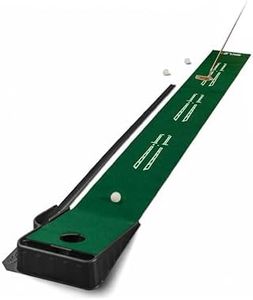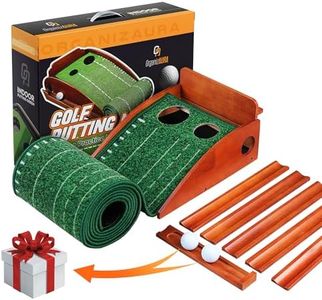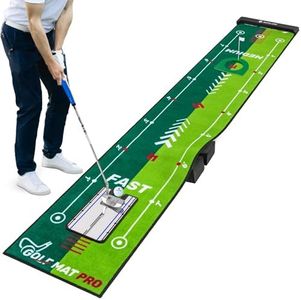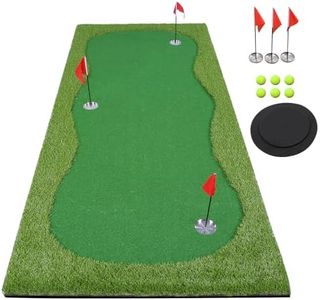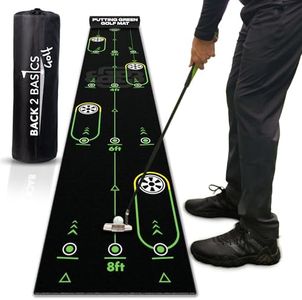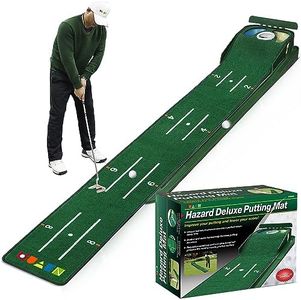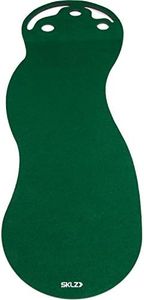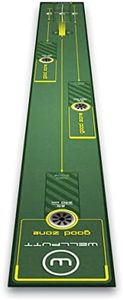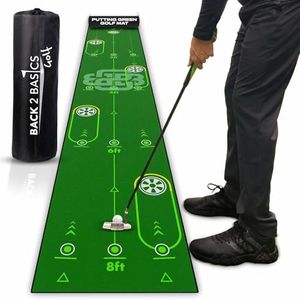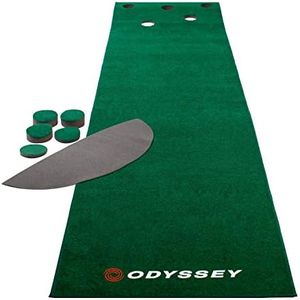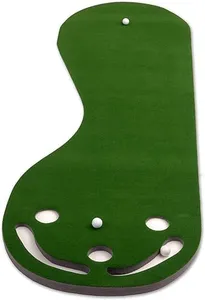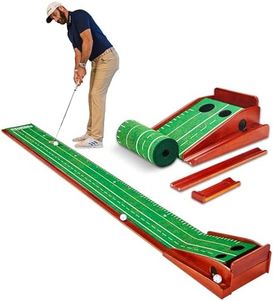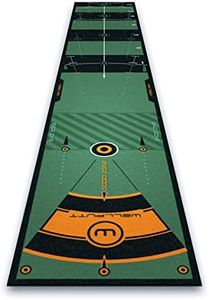We Use CookiesWe use cookies to enhance the security, performance,
functionality and for analytical and promotional activities. By continuing to browse this site you
are agreeing to our privacy policy
10 Best Indoor Putting Mats
From leading brands and best sellers available on the web.Buying Guide for the Best Indoor Putting Mats
Choosing an indoor putting mat is all about finding the right balance between practicing your golf skills and fitting into your home space. Since you’ll be using it indoors, you’ll want a mat that helps you improve your putting while being convenient to set up and store. The best putting mat for you depends on your skill level, available space, and how closely you want to mimic real green conditions. Understanding the main features and how they relate to your needs will help you make a great choice.Size and LengthSize and length refer to the dimensions of the mat, usually measured in feet. This matters because it determines how much space the mat will take in your home and what kind of putts you can practice. Shorter mats (6-8 feet) are best for small spaces and working on shorter putts, while longer mats (10 feet or more) allow you to practice distance control and are ideal for those with more room. Consider your available space and whether you want to focus on short, precise putts or work on a variety of distances.
Surface MaterialThe surface material is what the ball rolls on and affects how closely the mat mimics a real putting green. Mats can have a felt, nylon, or synthetic grass surface. Felt is smooth and fast but less realistic, nylon is more durable and can replicate a truer roll, while synthetic grass blends try to match the feel of a natural green. If you want authentic practice, choose one that replicates the green speed you usually play on; for casual play, a basic felt surface can be good enough.
Green Speed (Stimp Rating)Green speed measures how fast the ball rolls across the mat, similar to the 'stimp rating' used on real greens. Faster mats (higher stimp ratings) mean the ball travels farther with less force, suiting those who play on fast courses, while slower mats are better for practicing on greens that are more resistant. Think about where you most often play and pick a mat with a similar speed, so your practice feels realistic and carries over to the course.
Breaks and SlopesBreaks and slopes refer to built-in contours or features that allow you to practice curved or angled putts, not just straight ones. Some mats come flat, while others include movable pieces or slight inclines to help you simulate real-course conditions. If you want to develop a wider range of skills and make practice more challenging, look for a mat that allows you to configure breaks or includes these features. For basic skill-building, a flat mat can still be very effective.
Portability and StoragePortability and storage is about how easy it is to move or store the mat when not in use. Some mats roll up and are lightweight, making them ideal for people with limited space or the need to move them often. Others might be heavier or require disassembly. If your putting mat needs to be packed away after use or used in multiple locations, prioritize mats that advertise easy storage and setup.
Hole Size and PlacementHole size and placement describe how many holes the mat has, their diameter, and where they're positioned. Standard-size holes best replicate real putting conditions, while smaller holes can help improve accuracy. Multiple holes or adjustable hole positions add variety and extend practice options. Think about whether focusing on accuracy or having more variety in your practice sessions is more important for your improvement.


